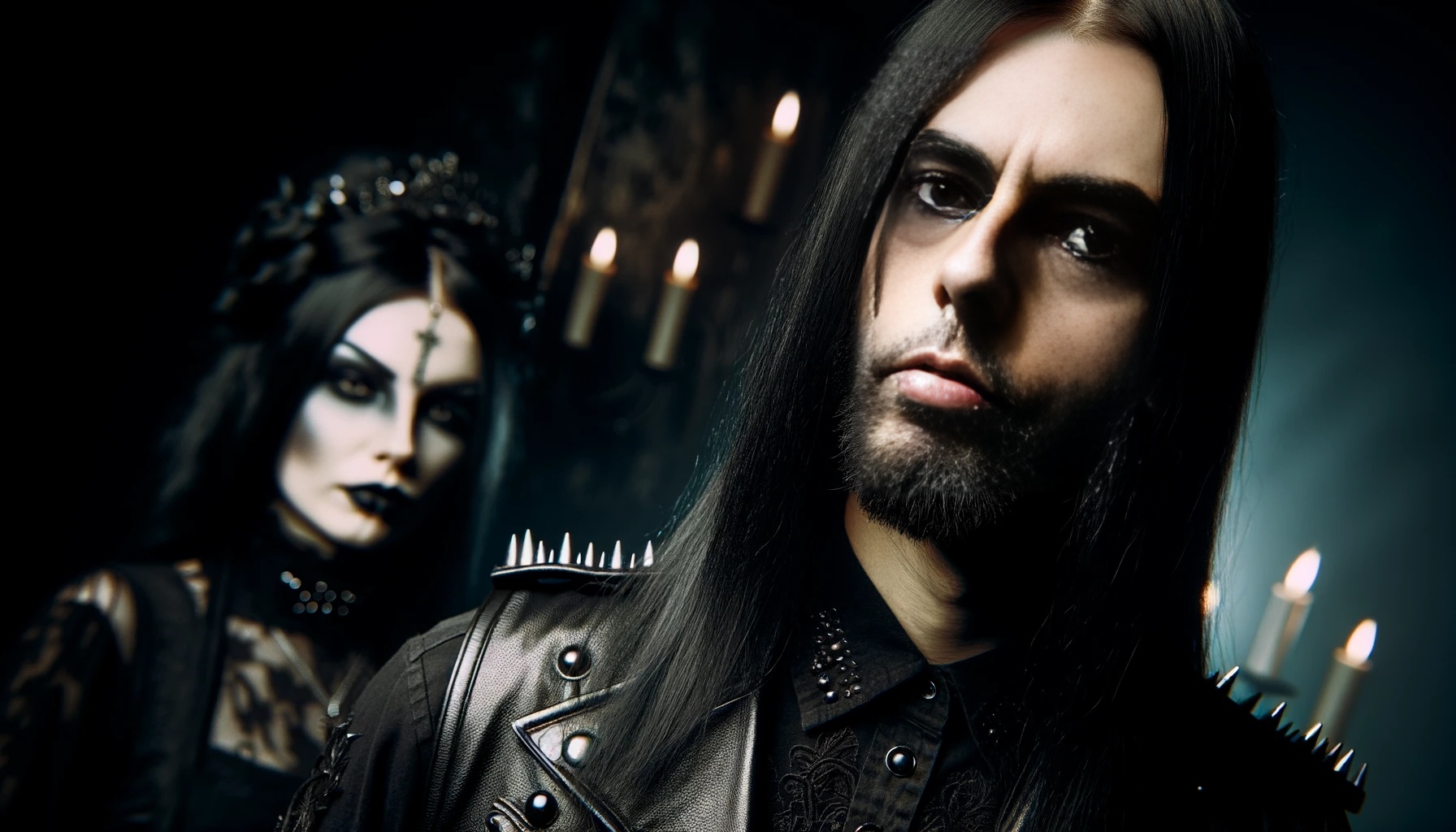In the shadowy corners of society, where the strains of electric guitars and the crack of a whip merge into a symphony of rebellion and desire, lies the fascinating intersection of BDSM culture and alternative music communities. This nexus, rich with history, symbolism, and shared values, is more than just a meeting point of kink and tunes. It’s a celebration of freedom, identity, and the unyielding human spirit.

The Origins: Shared Roots of Rebellion
BDSM culture and alternative music communities, particularly punk, goth, and metal, share a common origin story—one of rebellion against societal norms. In the 1970s, as the sexual revolution was challenging traditional views on sexuality, alternative music scenes were rising in defiance against the mainstream music industry. Both movements attracted individuals who felt like outsiders, those who were searching for a place where they could express their true selves without judgment.
BDSM, an acronym for bondage, discipline, dominance, submission, sadism, and masochism, has always existed on the fringes of society, shrouded in mystery and often misunderstood. Similarly, alternative music genres like punk and metal began as underground movements, creating spaces for those who felt alienated by mainstream culture. Both communities provided an outlet for expressing feelings and desires that mainstream society often deemed unacceptable.

Aesthetic Overlap: Fashion as a Form of Expression
One of the most visible intersections of BDSM culture and alternative music communities is their shared aesthetic. The leather, studs, and dark clothing of the BDSM scene are mirrored in the fashion of goth and metal subcultures. These styles are more than just clothing choices—they are statements of identity and defiance.
In the BDSM community, leather and latex are not only practical for certain activities but also symbolize power dynamics and sensuality. In the alternative music scenes, similar attire reflects a rejection of mainstream fashion norms and a desire to stand out. The shared love for dark, provocative fashion fosters a sense of camaraderie and mutual recognition between the two communities.

The Music: Soundtracks of Defiance and Desire
Music plays a crucial role in both BDSM and alternative music scenes. The intense, often aggressive sounds of metal and the melancholic, atmospheric tunes of goth music resonate with the themes of power exchange and emotional intensity found in BDSM practices. Bands like Nine Inch Nails, known for their dark and provocative lyrics, have long been embraced by both communities.
Lyrics exploring themes of pain, pleasure, power, and submission are common in alternative music, reflecting the core elements of BDSM relationships. The music becomes a soundtrack for the scenes played out in dungeons and private spaces, creating a shared emotional landscape that enhances the connection between participants.

Community and Safe Spaces
Both BDSM and alternative music communities emphasize the importance of creating safe, inclusive spaces where individuals can explore their identities and desires without fear of judgment. In the BDSM scene, consent and communication are paramount. Negotiation of boundaries and respect for limits ensure that all participants have a safe and enjoyable experience.
Similarly, alternative music communities often pride themselves on being inclusive and accepting. Concerts and club nights are places where people can express themselves freely, find like-minded individuals, and escape the pressures of conforming to societal expectations. These spaces act as sanctuaries for those who feel marginalized, offering a sense of belonging and acceptance.

Events and Gatherings: Celebrating the Intersection
Numerous events and gatherings celebrate the intersection of BDSM culture and alternative music. Fetish clubs and goth nights are popular across the world, drawing in crowds who revel in the dark, seductive atmosphere. Events like Torture Garden in London and Klub Verboten in Berlin blend elements of BDSM with live music and performances, creating immersive experiences that highlight the connection between the two communities.
Festivals like Wacken Open Air and Wave-Gotik-Treffen attract thousands of metal and goth fans, many of whom are also part of the BDSM scene. These festivals often feature workshops, fashion shows, and other activities that celebrate the shared aesthetics and values of both subcultures. The mingling of music lovers and kink enthusiasts fosters a sense of unity and shared purpose.

The Philosophy: Embracing Nonconformity and Personal Freedom
At the heart of both BDSM culture and alternative music communities lies a philosophy of nonconformity and personal freedom. Participants in these scenes often reject societal expectations and norms, choosing instead to forge their own paths and define their own identities. This shared philosophy creates a strong bond between the two communities.
In BDSM, the power dynamics and rituals allow individuals to explore aspects of their personality that they might suppress in everyday life. The emphasis on consent and mutual satisfaction empowers participants to take control of their desires and boundaries. Similarly, alternative music scenes encourage self-expression and creativity, offering a platform for artists and fans alike to challenge the status quo.

The Role of Technology and Social Media
Technology and social media have played a significant role in bringing BDSM culture and alternative music communities closer together. Online forums, social media groups, and dedicated websites provide platforms for individuals to connect, share experiences, and find events. These digital spaces break down geographical barriers, allowing for a more inclusive and diverse community.
Websites like FetLife offer a space for BDSM enthusiasts to network, share stories, and find local events. Similarly, social media platforms like Instagram and TikTok have thriving alternative music communities, where fans and musicians can share their love for goth, punk, and metal music. These online interactions often lead to real-life connections, further strengthening the bond between the two communities.

Overcoming Stigma: The Power of Education and Advocacy
Despite the growing acceptance of BDSM culture and alternative music, both communities still face significant stigma and misconceptions. Misunderstandings about BDSM often lead to negative stereotypes, while alternative music fans are sometimes dismissed as rebellious or antisocial. Overcoming these stigmas requires education and advocacy.
Many members of the BDSM community actively work to dispel myths and promote understanding through workshops, lectures, and media appearances. Similarly, musicians and fans of alternative music often use their platforms to challenge stereotypes and advocate for acceptance. By educating the public and promoting open dialogue, both communities strive to create a more accepting and inclusive society.

Conclusion: A Unified Front
The intersection of BDSM culture and alternative music communities is a rich tapestry of shared values, aesthetics, and experiences. Both movements provide a sanctuary for those who feel like outsiders, offering a space to explore identity, express desires, and find acceptance. Through shared fashion, music, and philosophy, these communities celebrate the beauty of nonconformity and the power of personal freedom.

As we continue to push the boundaries of societal norms, the bond between BDSM culture and alternative music communities will only grow stronger. Together, they stand as a testament to the enduring human spirit and the unyielding desire for self-expression and acceptance.
For more on carnal lust and sexuality, explore my section on Lina’s Dungeon.
Stay connected with me on social media for the latest updates and insights into the fascinating world of BDSM and alternative music.




